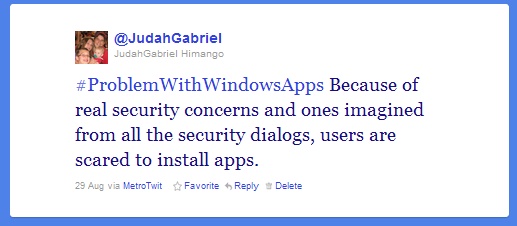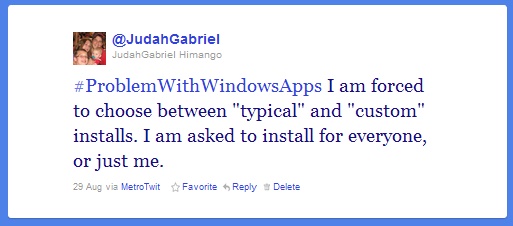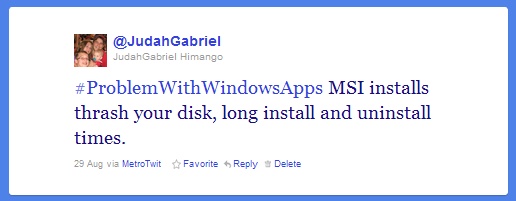One of the reasons that blogs are dying is that blogs no longer represent an individual online. Instead, Twitter, Facebook, or even email represents a person online. Blogs are relegated as unimportant side shows.
One problem with this — and forgive my verbing a noun — is that it silos a person into a single commercial entity. If your Facebook profile is you, no one can know about you except your Facebook friends. The only people than come in and go out are Facebook users. That’s a problem, because if Facebook ever becomes passe — not unlike MySpace did in recent memory — your identity online is scrapped.
So what other options do we have, and how can we make blogging relevant again?
Respected technologist Dave Winer recently posited that, on the net, your feed is you. What is your feed? I’d broaden Winer’s definition and say, it’s all the public stuff you do on the web: your blog posts. Your tweets. Your Facebook comments and status. Your comments on other blog posts. All of it.
That’s you. On the web, you are your feed.
The important part is the content you write, which is ultimately your blog. Everything else is secondary; Twitter can be an announcement mechanism for your blog posts. Facebook can, too. Today, that’s what content producers tend to use Twitter and Facebook for. You author your content on your site, then spam Twitter and Facebook. Then people come out of those silos and read your content on the opened web. This addresses the first problem with blogging, and that is makes your blog your primary authoring tool on the web, which helps push it back into its spot as your online identity.
The Comments Problem
Another problem with blogs is nobody comments on them. It’s too hard to comment on a blog.
To be sure, an audience isn’t a problem: in your blogging, if you keep jabbing, and throw the occasional haymaker, and you do this consistently, you’ll get an audience, no matter your niche topic. The problem isn’t from a lack of people.
Yes, even with an audience, people don’t comment on blogs. And part of the reason is the insane roadblocks you must navigate through to add a blog comment: OpenID provider? Do we know you? No? Sign up! Yes? Name, please! Password, please! Url, please! Type this hard to read CAPTCHA! Preview, please! Submit! Oh what’s that, we don’t support that HTML tag! Try again! OK! Now submit!
This commenting barrier problem has created an amusing phenomenon: the announcement of the blog post on Facebook gets more comments than the blog itself. Maybe 15 people will go back and forth about your blog…but they’ll do so on Facebook, not your blog. Ditto for Twitter. After all, it’s so easy to comment on Facebook; there’s no typing your name, no typing your URL, no preview, no CAPTCHA, no confusing OpenID provider selection, none of that. Just type your comment and hit enter.
One solution I’d like to propose to this problem is automated duplication of Facebook comments into blog post comments. Yes, if Daria M. writes a comment on your post announcement on Facebook, why not do her a favor and copy that comment onto the opened web, onto your blog? Make it automated. Suddenly, your blog posts have 40 comments instead of 5. And they’re all on the opened web.
Here’s what this would look like:
- Write a piece of software that looks at your Facebook feed.
- When that software detects a feed item that contains a link, unwrap the link (almost all services now, including Facebook and Twitter use web-breaking URL shortening services)
- If the unwrapped link points to a post on your blog, check the comments.
- If the comments exist on that feed item, talk to the blog services (e.g. WordPress, Blogger) APIs to post a comment to linked blog post.
End result: when someone comments on your Facebook status announcing your new blog post, comments to that status get reproduced on your blog. The same thing goes for Twitter and Google+.
Here’s what’s involved with making this work:
For #1, we’d need an app that talks to [social media service]. A Facebook app, in this case.
For #2, our software would need the ability to unwrap links from URL shortening services.
For #3, our software would need to work with the social media service’s APIs to fetch comments on a feed item. Facebook and Twitter already support this.
For #4, we’d need our software to communicate with [blogging service] to post a new comment to the blog. WordPress and Blogger likely already support this.
The feels like a problem that could be solved with the IfThisThenThat (IFTTT) web service. There, you can create recipes for [when something happens on the web] then [do this other thing on the web]. The problem, however, is it appears that IFTTT doesn’t have any tasks adequately powerful. While Twitter (and Facebook?) have RSS feeds for your feed, there’s no built-in IFTTT task for unwrapping shortened hyperlinks (step #2), fetching comments to feed items (step #3), or posting comments to blogs via blog APIs.
Could it be that this could be done with Yahoo Pipes? That feels a bit more powerful than IFTTT.
In any case, I’d like to see this done. I might just have to do it myself, but I’d love to find that someone’s already done the heavy lifting.



















